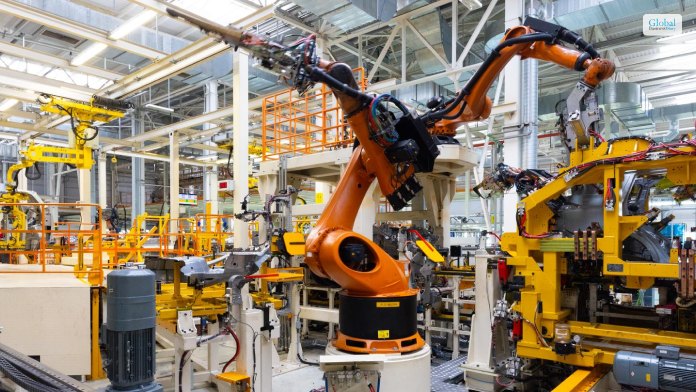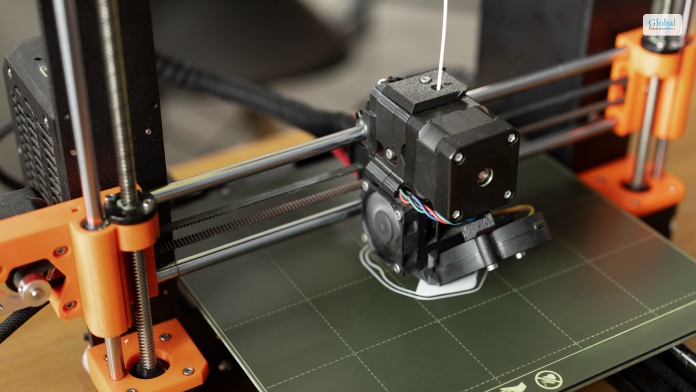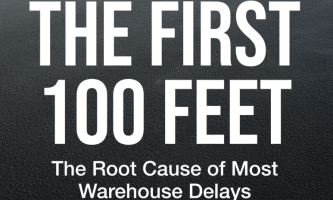Growing Industries In The USA In The Upcoming Financial Year

Do you want to know about the growing industries in the USA? If yes, then this article will offer you the complete details of it while attaining your objectives. You need to get through the complete details of it while attaining your objectives with ease. Although things can become easier for you.
In the upcoming financial year, the chances of growth in some specific industries will be quite high. These industries will play a significant role in the country’s due growth. The contribution of the industry’s compound annual growth rate is 7% to the total economy.
The healthcare industry is expected to show significant growth in the upcoming years. The growth potential will be $583 billion in 2022 to $819 billion in 2027. It will rise in the upcoming years. You must be aware of it while attaining your goals. Keep proper distribution channels in place.
15 Growing Industries In The USA 2024
The growth potential of some growing industries in the USA is quite huge. You must be aware of it while attaining your objectives with complete ease. Some of the key factors that you should know from your end are as follows: –
1. Software Development & IT Services

In the digital age, application of software technology and IT industries plays a pivotal role in changing the landscape of business. The demand for and application of innovative software solutions customized IT services, and mobile apps play a vital role here.
Cloud computing and Blockchain technology will play a pivotal role in shaping the economies of the world. Once you follow the correct trend, things can become easier for you to attain your requirements with ease. Additionally, it can make the system work and make things clear for you.
2. E-commerce & Online Retail

The online retail sector and E-commerce industries will help you redefine the people in the industry. Once you follow the process, things will become easier for you. These businesses will offer a strong online presence. Additionally, growing Industries in USA can make things easier for you.
This business offers a strong online presence in the market. It helps to tap the global customer base to offer flexibility and scalability for the e-commerce offers. Also, this industry can dominate in the present and future.
3. Healthcare & Telemedicine

The healthcare industry is going through the transformation phase. Particularly after the COVID-19 pandemic, telemedicine and digital health solutions will offer immense popularity. The healthcare industry is experiencing rapid growth in the country. Furthermore, it can boost the chances of your brand development.
The addition of technology in the healthcare sector increased the chances of growth. Enables convenient access to medical services, reduces the amount of cost, and enhances the chances of the patient’s outcome. As the population in the USA ages, the demand for the healthcare sector increases at a rapid pace.
4. Artificial Intelligence & Machine Learning

The application of artificial intelligence and machine learning is causing a revolution in various industries in the USA. This is one of the growing industries in the USA that can help you to reach your requirements with ease. Furthermore, it reduces the chances of human effort to make life easier for business owners.
Once you follow the correct solution, things can become easier for you to attain your requirements with ease. AI is now gradually taking over the US market. It has long-term implications in Manufacturing, Healthcare, finance, and customer service.
The continuous advancement in AI and ML algorithms can help your business to grow at a rapid pace. You should ensure that the scope of errors is as low as possible.
5. Financial Technology & Fintech

The Fintech industry is going through due to the intersection of technology and finance. It enhances financial services and leverages technology to a great extent. Additionally, this industry offers innovative solutions to industry users to a great extent. Moreover, it can boost the chances of employment.
Increases the adoption of mobile banking, blockchain-based solutions, and digital payments. The USA has been gradually moving towards a cashless society, with a growing preference for digital payment methods. Fintech companies offering mobile payment solutions, peer-to-peer transfers, and digital wallets continue to gain popularity.
6. Renewable & Solar Energy

Government policies and incentives play a crucial role in the growth of the solar energy industry. The extension of federal tax credits, state-level incentives, and supportive regulations can significantly impact the adoption of solar technologies. Along with it, the demand for solar energy in the US will rise in the upcoming years.
This trend is likely to continue, driving increased adoption of solar power systems in residential, commercial, and utility-scale projects. You must ensure that the scope of the mistakes from your counterpart is as small as possible. Furthermore, it can help you to reach your requirements with complete ease.
7. Automation & Robotics

The robotics and automation industry are revolutionizing various sectors, and this will improve your efficiency to a great degree. Additionally, you need to get through the complete process that can assist you in reaching your requirements with ease.
From manufacturing to healthcare, logistics to e-commerce businesses are now heavily dependent on automation and sensor technology. This can boost the chances of your brand development to the next level. Most of the time, businesses seek innovative ways to enhance the level of competitiveness and productivity. Along with it, it can also make the process of automation swifter.
8. Education Technology & Online Learning

The COVID-19 pandemic accelerated the adoption of online learning and remote education. Even after the pandemic, the trend of online and hybrid learning models is likely to continue. Thus, creating opportunities for EdTech companies to offer e-learning platforms, virtual classrooms, and digital educational content. Additionally, it has become a new trend in this digital age.
Schools and universities are increasingly integrating technology into traditional education settings. This includes the use of interactive whiteboards, educational apps, virtual reality (VR), and augmented reality (AR) tools to enhance the learning experience.
9. Biotechnology & Pharmaceuticals

Continued investments in research and development are critical for the biotechnology and pharmaceutical industries. Along with it, Ongoing efforts to discover and develop new drugs, therapies, and biotechnological solutions contribute to industry growth. Ensure that you follow the correct solution from your end.
The move towards precision medicine, where treatments are tailored to individual patients based on their genetic makeup and other factors, is gaining momentum. This approach has the potential to revolutionize disease treatment and management.
10. 3D Printing Services

3D printing services are finding applications across diverse industries, including healthcare, aerospace, automotive, consumer goods, and more. The ability to produce complex geometries and customized parts is driving the technology’s adoption in various sectors.
Growing acceptance of 3D printing for end-use production parts in industries like automotive and aerospace is contributing to increased adoption. This shift from prototyping to actual manufacturing is a significant driver for the industry.
11. Remote Work & Collaboration Tools

Remote work and collaboration can help your business to grow at a faster pace. Online earning has become a new trend in the USA over the years. You must ensure that you know the facts from your end while meeting your requirements with ease.
Once you maintain the correct solution, things can become easier for you in the long run. Integration of various communication channels (messaging, video conferencing, email) into unified platforms enhances efficiency and collaboration. Companies offering comprehensive solutions are well-positioned for growth.
12. Cybersecurity

The prevalence of remote work has expanded the attack surface, making organizations more vulnerable to cyber threats. The need to secure remote work environments is likely to fuel demand for cybersecurity solutions tailored for distributed workforces. Thus, it can keep the safety of your server in the proper place.
The ongoing rise in cyber threats, including ransomware attacks, data breaches, and sophisticated cybercrime, is expected to drive increased demand for cybersecurity solutions.
13. Real Estate Technology

The direction of interest rates can impact mortgage rates, influencing affordability for homebuyers. Lower interest rates often stimulate housing demand. Once you develop the real estate technology in the correct order, things can become easier for you in the long run.
The demand for real estate technology is increasing in the USA. Along with it, the government policies on mortgage loans have largely softened. You need to take care of reality while attaining your objectives with complete ease.
14. Electric Vehicles & Sustainable Transportation

The transition to electric mobility is influenced by environmental concerns, government policies, advancements in technology, and changing consumer preferences. Tesla and other big companies are now focusing on the growth of electric vehicles in the country. The transportation expenses will be reduced considerably due to the presence of EV vehicles.
You must ensure that you follow the right process from your counterpart. Without knowing the reasons, you cannot take the corrective steps from your end. The demand for EV vehicles will help you reach your goals with ease.
15. Augmented Reality & Virtual Reality

Growing adoption of AR and VR in enterprise environments for training, simulations, remote assistance, and collaborative workspaces. Industries like healthcare, manufacturing, education, and logistics leverage these technologies for improved efficiency.
Continued growth in AR and VR applications for consumer entertainment, including gaming, interactive experiences, and virtual events. Ensure that you follow the correct process from your counterpart.
Which Industry Will Fall In Upcoming Years In The USA?
There are several industries present in the USA that can fall in the upcoming years. You need to get through the details of it while attaining your objectives with complete clarity. Once you follow the right process, things can become easier for you. Some of the key aspects of it are as follows: –
1. Traditional Retail
Traditional brick-and-mortar retailers have faced competition from e-commerce. And the shift in consumer behavior towards online shopping has accelerated, especially after the COVID-19 pandemic. It’s important to note that industry performance can be influenced by a combination of external factors, and successful adaptation to changing trends can mitigate challenges.
2. Legacy Media
Traditional print media and certain segments of the broadcast industry have experienced challenges as digital platforms continue to gain dominance. Some of the effective planning can assist you in reaching your goals with ease.
3. Non-Renewable Energy
With a growing emphasis on sustainability and renewable energy. Industries relying heavily on non-renewable energy sources might face challenges due to evolving environmental regulations and changing consumer preferences. Although things can become easier for you in all possible ways.
4. Legacy In Auto Manufacturing
The automotive industry is undergoing significant transformations with the rise of electric vehicles and advancements in autonomous driving technology. Traditional auto manufacturers that are slow to adapt may face challenges.
5. Traditional Banking
The rise of fintech and digital banking has led to increased competition, challenging traditional banking models. As technology continues to reshape the financial industry, some traditional banks may face disruptions. You should not make things too complex from your end. Unless you follow the correct steps, things can become more complex for you.
6. Cable & Satellite Television
Traditional cable and satellite television providers may experience challenges as consumers increasingly opt for streaming services and on-demand content. You should get through the complete details of it while meeting your requirements with ease. Without effective planning, you cannot reach your desired destination.
7. Non-Essential Physical Retail
Globalization and shifts in manufacturing locations have affected the textile and apparel industry. Some segments may face challenges due to overseas competition and changing consumer preferences. You need to know the reality from your end while attaining your requirements with absolute ease.
Traditional IT services are not adapting to the growing demand for cloud computing. Artificial intelligence and digital transformation may face challenges from more agile and innovative competitors.
Final Take Away
Hence, if you want to grow your business in the correct order, you must follow the correct steps. You cannot just make things happen in the incorrect manner. Once you get through the complete process, things can become easier for you.
You can share your views and comments in our comment box. Sharing your experience in this matter will help us to know your take on this matter. Try to keep things in perfect order. Without the correct plans, things can turn worse for you.
It’s important to note that the AR and VR industry is dynamic. The scope of growth is subject to technological advancements, market dynamics, and evolving use cases. For the most up-to-date information on the industry’s growth in 2024. It is advisable to refer to recent industry reports, market analyses, and updates from reputable sources.
For More Business Related Information Click Below:













